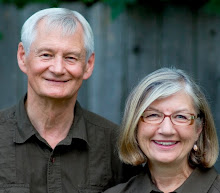 Built in 1392, the Nine Dragon screen is the largest glazed-tile wall in China (45m long).
Built in 1392, the Nine Dragon screen is the largest glazed-tile wall in China (45m long).27 May 2011
Datong
The province next door is Shanxi, which is as dry as dust and full of coal mines. We discovered, however, a wonderful collection of ancient Buddhist sights.
 Built in 1392, the Nine Dragon screen is the largest glazed-tile wall in China (45m long).
Built in 1392, the Nine Dragon screen is the largest glazed-tile wall in China (45m long).
 Built in 1392, the Nine Dragon screen is the largest glazed-tile wall in China (45m long).
Built in 1392, the Nine Dragon screen is the largest glazed-tile wall in China (45m long).18 May 2011
Middle School
As part of our teaching duties, each week we arrive on the campus of Senior Middle School #4.
 This is a key (magnet) school with about 2000 high school students, and even comes with its own small observatory.
This is a key (magnet) school with about 2000 high school students, and even comes with its own small observatory.
 Students wear uniforms (track suits) and each day line up for exercise.
Students wear uniforms (track suits) and each day line up for exercise.
 Twice a day the students mop their classrooms and hallways, an essential task given the recent sand storms we've been experiencing.
Twice a day the students mop their classrooms and hallways, an essential task given the recent sand storms we've been experiencing.
 This is a key (magnet) school with about 2000 high school students, and even comes with its own small observatory.
This is a key (magnet) school with about 2000 high school students, and even comes with its own small observatory. Students wear uniforms (track suits) and each day line up for exercise.
Students wear uniforms (track suits) and each day line up for exercise.  Twice a day the students mop their classrooms and hallways, an essential task given the recent sand storms we've been experiencing.
Twice a day the students mop their classrooms and hallways, an essential task given the recent sand storms we've been experiencing. 12 May 2011
Wudang Lamasery
07 May 2011
Visitor
Franklin Ishida from the Lutheran church sponsoring agency came to Baotou -- our very first visitor. He impressed Diane's students with his Japanese, his insights on being a Japanese American, and his explanation of the role of the church in China and the world.
He impressed Diane's students with his Japanese, his insights on being a Japanese American, and his explanation of the role of the church in China and the world.  We toured the Red Revolutionary Museum which houses a hundred statues in all sizes of Chairman Mao, a large display of his little red book, and learned of the 3 wheels of revolutionary success -- a bicycle, a sewing machine, and a watch.
We toured the Red Revolutionary Museum which houses a hundred statues in all sizes of Chairman Mao, a large display of his little red book, and learned of the 3 wheels of revolutionary success -- a bicycle, a sewing machine, and a watch.
 He impressed Diane's students with his Japanese, his insights on being a Japanese American, and his explanation of the role of the church in China and the world.
He impressed Diane's students with his Japanese, his insights on being a Japanese American, and his explanation of the role of the church in China and the world.  We toured the Red Revolutionary Museum which houses a hundred statues in all sizes of Chairman Mao, a large display of his little red book, and learned of the 3 wheels of revolutionary success -- a bicycle, a sewing machine, and a watch.
We toured the Red Revolutionary Museum which houses a hundred statues in all sizes of Chairman Mao, a large display of his little red book, and learned of the 3 wheels of revolutionary success -- a bicycle, a sewing machine, and a watch.
Subscribe to:
Posts (Atom)



















